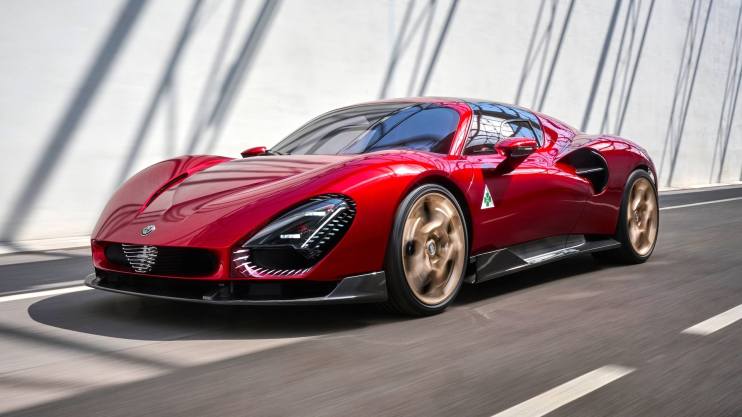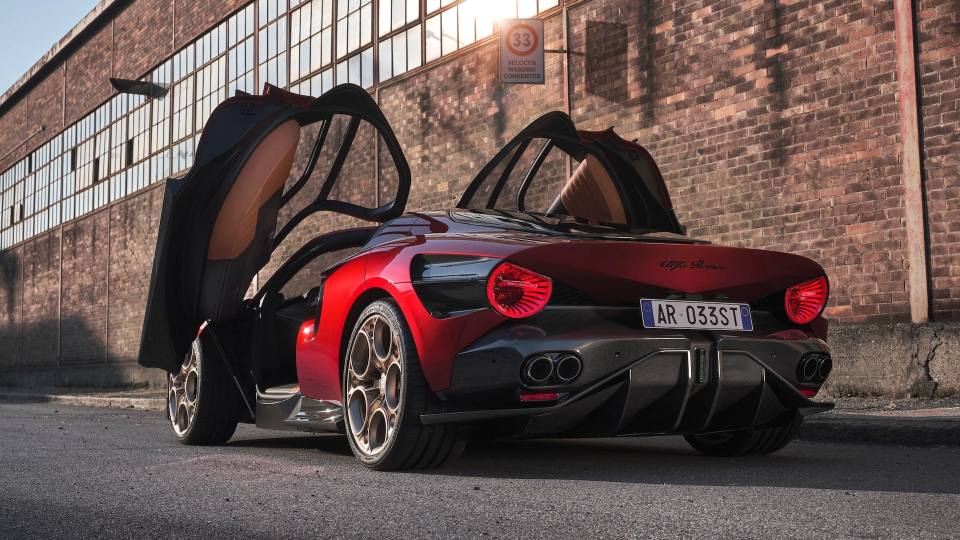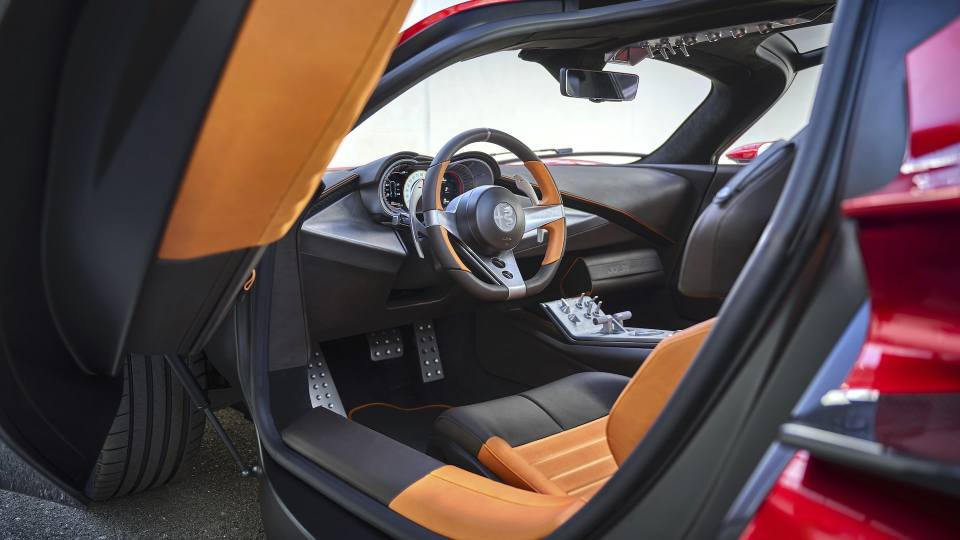Alfa Romeo celebrates its past with stunning 33 Stradale supercar

Alfa Romeo is paying tribute to its heritage with a retro-styled, £1.7 million remake of the iconic and breathtakingly beautiful 33 Stradale.
Produced between 1967 and 1969, the original 33 Stradale is regarded as one of the world’s first supercars.
Now, as Alfa Romeo heads towards an electrified future, a limited production run of the reimagined 33 Stradale celebrates its past and future. Significantly, this will be the last combustion-engined supercar from the Italian marque.
Making the Alfisti proud

According to Alfa Romeo CEO Jean-Philippe Imparato, the aim with the new 33 Stradale was “to create something that lived up to our past, to serve the brand and to make the Alfisti fandom proud”.
The voluptuous design is by Alfa Romeo Centro Stile, and reinvents the classic model’s dramatic butterfly doors. Unlike the original, however, the latest 33 Stradale is made from a combination of lightweight carbon fibre and aluminium.
More radical is the choice of powertrains on offer. Buyers can choose a 620hp twin-turbocharged 3.0-litre V6 petrol engine or a fully electric version. The EV musters an even more substantial 750hp. Both cars are said to be capable of 0-62mph in less than three seconds, plus a top speed of 207mph. Opting for battery power means an official range of 280 miles.
Handling by Valterri Bottas

Formula One driver Valterri Bottas is responsible for the car’s final chassis setup. Double wishbone suspension and carbon ceramic brakes with brake-by-wire technology should ensure the 33 Stradale handles and stops like a supercar, too.
Buyers can opt for two different interior designs. Tributo honours the late-1960s classic, with aluminium design details, while the track-focused Alfa Corse option features exposed carbon fibre.
The 33 Stradale will be hand-built by Carrozzeria Touring Superleggera, and each of the 33 examples was sold within weeks of potential customers seeing design sketches at the 2022 Monza Grand Prix. The first lucky owners should receive their cars in 2024.
John Redfern writes for Motoring Research